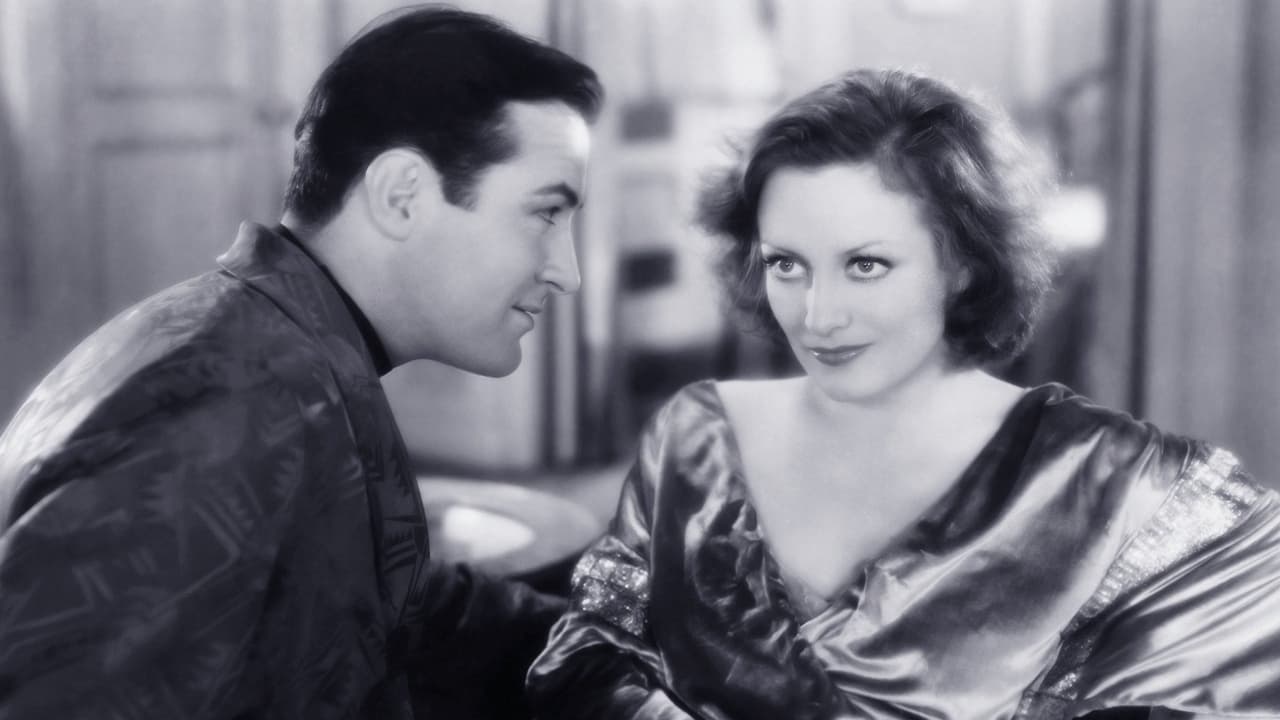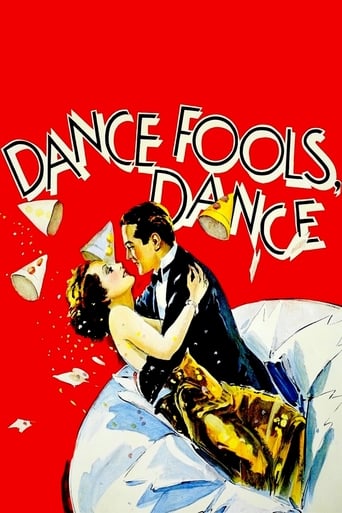


The opening scenes of Dance, Fools, Dance paint a picture of spoiled rich kids Joan Crawford and her brother William Bakewell. Neither has apparently completed school or ever done anything worthwhile. Their father—who worked his own way up to wealth from the bottom—is worried. Joan smokes before breakfast; her brother buys liquor by the suitcase. The height of adventure and success for Joan is a yacht party where she boldly talks everyone into skinny dipping (well, stripping down to their underwear) out on the ocean.The father dies and it turns out he's broke; the picture turns to chapter two, or, How will the spoiled kids survive? –Well, the brother finds work with a bootlegging mob, and Joan gets a job as a cub reporter. (Influential friend of the family helps her out, apparently...no, she's not remotely qualified, but shows a knack for the work right away!) Rather quickly, the brother finds himself over his head in the sordid business of bootlegging...and Joan, eager for a real story instead of the tea parties she's initially assigned to, takes on....you guessed it, the mob.There's more to it than that, including Joan's sometime boyfriend (Lester Vail), who half-heartedly offers to marry her when her fortune goes kaput and hangs around when she sets off to make her own success; and Cliff Edwards as the veteran reporter who mentors Joan at the paper but hears too much for his own good at a speakeasy.Clark Gable is riveting as boss gangster Jake Luva; pre-mustache, the swagger is already there. His first scene features a cigarette-lighting routine with girlfriend Natalie Moorhead (excellent in a tiny role as the soon-to-be discarded moll): he blows smoke in her face, she blows out his lighter, and they hold a stare for a lingering shot that speaks more about their characters' relationship than any of their dialog even attempts.Midway through the story you have a pretty clear idea of where the plot is going to go .but the second half of the picture is still livelier than the first: at least the characters have some purpose in the second half. Crawford is especially good: she is always at the center as the picture revolves through her relationships with the various men in her life—lover, brother, mentor, gangster.Joan also gets in one good dance—undercover as a chorus girl, she sees her former rich kid friends in the audience and really puts on a number.No classic as far as plot goes, or dialog but worth seeing for Crawford's performance.Research question: How would a 1931 movie audience have been impressed by spoiled rich girl Crawford flashing an electric hair dryer?
... View MoreJoan Crawford got to display some of her dancing talents which brought her to films in the first place in Dance Fools Dance. She also was paired for the first time with Clark Gable. Although Gable was sixth down on the billing the impression he made assured that he and Crawford would work together again.In fact when Dance Fools Dance came out Crawford was already shooting another film, Laughing Sinners with Neil Hamilton and Johnny Mack Brown as her leads. The reviews Gable got made Louis B. Mayer scrap all the footage that had been shot with Brown and Gable was immediately recast in that picture.Crawford and William Bakewell play a couple of rich kids whose father William Holden loses everything in the Crash of 29 and dies from the shock of it. And I mean he lost everything as the mansion and its furnishings are auctioned off to pay all the debts the estate owes. Both of them have to go to work, Bakewell not all pleased with that prospect.Joan goes to work for a newspaper, writing sob sister stuff and she proves she has a knack for it. Bakewell on the other hand gets a job with your friendly bootlegger and his boss who is Clark Gable.At this point the film makes use of the real life incidents of the St. Valentine's Day Massacre and the murder of reporter Jake Lingle in Chicago who covered the gangland beat. Cliff Edwards who plays the reporter does an excellent job, possibly the best acted part next to Gable. Playing opposite Crawford as her ever faithful boyfriend from the good old rich days is Broadway actor Lester Vail. I looked Vail up on the Broadway Database and he had considerable stage career. He did not do too many films and truth be told he did not register well as a screen presence. No wonder all the talk was about the few scenes Gable and Crawford had together when she went undercover to investigate the murder of her friend and colleague Edwards.Though it goes over the top in the melodrama toward the end Dance Fools Dance was a significant milestone in the careers of two screen legends.
... View More"Dance, Fools, Dance" is an early Crawford-Gable vehicle from 1931. Crawford plays a Bonnie Jordan, a wealthy young woman whose life consists of parties, booze, and stripping off her clothes to jump from a yacht and go swimming. This all ends when her father dies and leaves her and her brother (William Blakewell) penniless. Bonnie gets a job on a newspaper using the name Mary Smith; her brother goes to work for bootleggers. The head man is Jake Luva - portrayed by Clark Gable as he plays yet another crook. Later, of course, he would turn into a romantic hero, but in the early '30s, MGM used him as a bad guy. Not realizing that her brother is involved in illegal activity, Bonnie cozies up to Luva.Gable and Crawford made a great team. Her facial expressions are a little on the wild side, but that, along with her dancing, is one of the things that makes the movie fun. Look for Cliff Edwards, the voice of Jiminy Cricket, as Bert.It's always interesting to see the precode movies, and "Dance, Fools, Dance" is no exception.
... View MoreOne of my favorite scenes is at the beginning when guests on a private yacht decide to take an impromptu swim - in their underwear! Rather risqué for 1931!
... View More